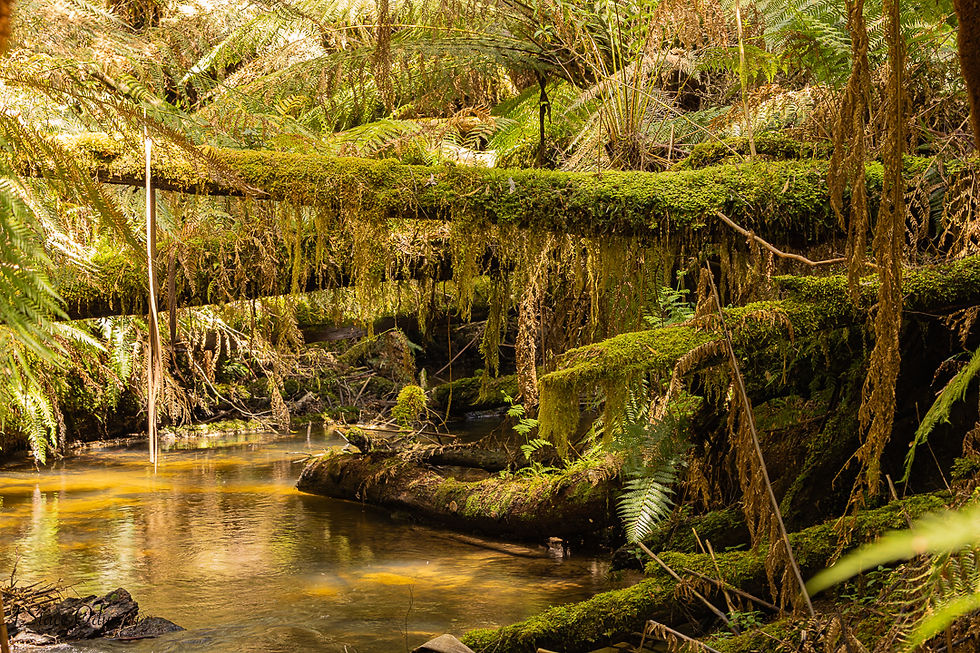Exploring the Natural Wonders of Wilsons Promontory
- Lauretta Stace

- May 4
- 4 min read

A beautiful sunrise is the ideal way to begin this blog about our time spent exploring the magnificent Wilsons Promontory in the South Gippsland region of Victoria. We visited 'The Prom' several years ago and decided to return to capture more of its spectacular beauty. The sunrise is emblematic of how this return experience made us feel - relaxed but also energised and connected to nature.
Yanakie
Our base camp was located near the village of Yanakie which is nestled alongside the Corner Inlet on the eastern side of Wilsons Promontory. Yanakie is an ideal base for exploring the Wilsons Promontory National Park. It's surrounded by lush dairy farms where the cows appear to have the best views in Victoria over the inlet and surrounding hills. Being located on the eastern side, we were able to watch the tidal flow of the inlet at various times of the day and experience some magnificent sunrises before breakfast - a great way to start each day!
Wilsons Promontory National Park
Wilsons Promontory is the southern-most tip of the Australian mainland. It covers about 50,000 square hectares of unspoiled wilderness and is surrounded by the wild Southern Ocean to the west and south as well as calm, protected inlets on the eastern side. It contains a myriad of walking trails, an abundance of native birds and wildlife and beautiful white quartz beaches.
If you ever want to photograph the national emblem of Australia in the wild, this is the place to go. One of the first attractions in the National Park is a wildlife walk through the heathland. The walk takes you on a circular path through a large plain on level ground, surrounded by wooded hills. There are numerous kangaroos and emus grazing on the plain and they are very relaxed about human presence. Unfortunately, we didn't see a wombat or echidna on this occasion, but a welcome sight was the yellow-tail black cockatoo gliding by. It's always a privilege to see these iconic animals up close in the wild and to know that they are safe and protected from harm in the Park.
Whisky Bay
The bays, beaches and inlets of Wilsons Promontory National Park are truly sensational. On the western side, the rugged coast is surrounded by rolling hills and granite outcrops.
A series of bays have been scooped out by wind and waves to form beautiful beaches that provide opportunities for walking, swimming, surfing and snorkelling. Whisky Bay and Picnic Bay were our first stop for a lovely walk through coastal heathland to the beach and then along a headland that provides fantastic views of the ocean. Along the way, we found a young snake with beautiful colouring, having a sun-bake. After checking its identification we determined that it was a young lowland copperhead which is found in south-eastern mainland Australia and Tasmania.
Squeaky Beach
Next stop along the coast was Squeaky Beach, which has rounded grains of quartz sand that make a squeak when walked on. Of course, this claim was tested and it was found to be true! The beach is incredibly beautiful with its display of massive granite boulders, covered in orange lichen.
We could not help but notice the similarity with the Tasmanian coastline. so it was good to find out that this is one of the largest exposed Lower Devonian batholiths in Victoria. In layperson’s terms, it has a lot of rocks. Granite being the big one. The granite mass on which the Prom is built extends all the way to Tasmania,
Tidal River
Tidal River is the base camp for the National Park and it contains its own tourism ecosystem, with a massive camp ground for tents, caravans and camper trailers, shops, a bistro/cafe and huts and other amenities for walkers, overnight hikers and mountain bike enthusiasts. It was a busy place, but it was great to see so many people enjoying what the Park has to offer.
On the flip side, a boardwalk around Tidal River provided us with an opportunity to amble through a more serene environment and enjoy the tranquil beauty of the river as it winds its way to the ocean. There was no wind on the day, so the water was still and dark, providing fabulous reflections. There were lots of water-birds on the river and in the estuary including some of our favourite photography subjects - cormorants, ducks and herons. Again, the similarity to the Tasmanian landscape was striking, with the still waters stained brown by native tannins. We walked along the boardwalk until the river met the estuary, and then proceeded to walk towards the ocean beach.
Norman Beach
As Tidal River makes its way to the ocean, it starts its new journey at Norman Beach. This is a large and majestic stretch of beach ideal for swimming, surfing and boating. The wilderness and whale watching cruises depart from Norman Beach. We were able to watch a couple of vessels full of excited passengers in their red spray jackets drive down the beach and once in the water, convert from wheels to propellers - a very clever design. The filtered sunlight and cloud-cover produced some wonderful landscape images to capture on camera.
To see more of our journey through this wilderness, watch our video on YouTube:
This part of our odyssey has been very relaxing and enjoyable. We will now spend some time outside the National Park, exploring the coastal areas of South Gippsland before heading north into the mountains.









































































































































Comments